Be aware that attempting weight loss without understanding your desired caloric intake can be like shooting blindly, and you may over- or under-eat. Thus, the presence of a calorie deficit calculator eliminates guessing and leads you to the number of calories you should reduce or increase. If you are out and hunting for the right calculator, consider reviewing this guide first since it offers you the finest options to pick from.
Above all, it reveals the fundamentals of calorie calculators, the way they operate, as well as what they can contribute. In the end, you will have accumulated knowledge and tools to make better decisions about your weight loss and fitness goals.
In this article
Part 1. How Does a Calorie Deficit Calculator Work?
Before you opt for a deficit calories calculator, know that this tool starts working by gathering your details like age, sex, height, weight, and activity level. It requires this information to estimate the Basal Metabolic Rate, the calories your body needs at rest. After that, the calculator then multiplies the BMR by the activity factor to find your Total Daily Energy Expenditure.
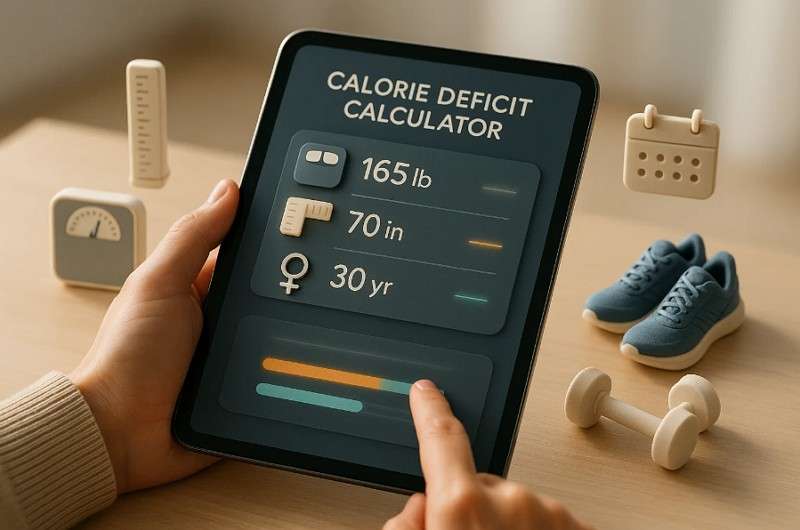
Upon doing so, the calculator subtracts a set number of calories from TDEE to create a recommended intake after you input your goal. Hence, while estimating the overall rate, this tool then shows how following this deficit will help in reaching a specific goal over time. Thus, the most common equations used for calculating the BMR for men and women are given as follows:
For Men: BMR=10×weight (kg)+6.25×height (cm)−5×age (years)+5
For Women: BMR=10×weight (kg)+6.25×height (cm)−5×age (years)−161
Your BMR is then adjusted by multiplying by an “activity factor” to account for physical activity:
- Sedentary: BMR × 1.2
- Light Activity: BMR × 1.375
- Moderate Activity: BMR × 1.55
- Very Active: BMR × 1.725
- Extra Active: BMR × 1.9
Factors Affecting Your Calorie Deficit
When you are counting your BMR with a calculator for calorie deficit, several factors mentioned can affect the reading:
| Factor | Effect on Deficit |
| Age | Older age lowers BMR |
| Gender | Men burn more at rest than women |
| Activity Level | Higher activity raises TDEE |
| Goals | Weight loss = Lower intake; Gain = Surplus. |
| Calorie Intake | Underestimating erases the deficit |
| Overestimating Activity | Leads to overeating |
| Metabolic Adaptation | Calorie burn drops with weight loss |
| Hormonal Health | Disorders of slow metabolism |
| Sleep | Poor sleep increases cravings |
| Stress | High cortisol promotes fat storage |
| Eating Patterns | Fast/distraction = Overeating |
| Water Retention | Masks fat loss on the scale |
| NEAT (Non-Exercise Activity Thermogenesis) | Less spontaneous movement lowers burn |
Part 2. Benefits of Using a Calorie Deficit Calculator | Core Advantages
After understanding the working principles and factors that affect the calculation of the calculator for calorie deficit, this section covers several benefits of this tool.
- Personalized and Accurate Targets: To offer personalized and precise goals, the calculator tailors your calorie intake based on your age, gender, weight, and height.
- Improved Weight Loss Success: Allowing you to reach weight goals steadily and securely, these calculators provide you with daily targets.
- Greater Awareness and Accountability: These calculators also foster better awareness of intake while highlighting the portion size and eating habits.
- Prevention of Under- or Overeating: This solution also allows you to avoid common pitfalls like eating too much or too little, ensuring steady progress toward your goals.
- Support for Long-Term Health: With these calculators, you can also eliminate the risk of obesity-related conditions, enhance insulin sensitivity, and lower inflammation.
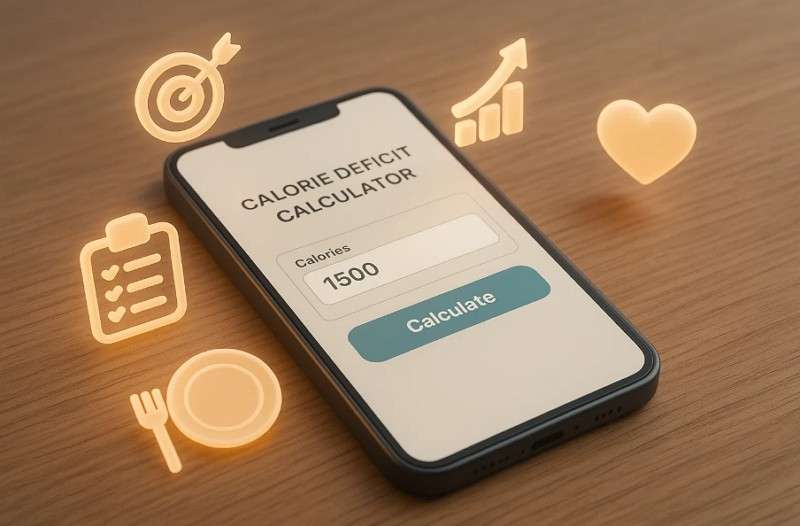
Part 3. 5 Best Calorie Deficit Calculators to Smartly Lose Weight
Now that you are familiar with calorie deficit calculation and its importance, let's have a look at the best options given below:
1. CalBye - AI Calorie Counter
Although it's not a calorie deficit calculator, it enables you to track your calorie intake for each meal by taking a photo of your food. Leveraging AI algorithms, the app then monitors the food and extracts the data from the database to offer detailed macro nutrient details. The foremost aspect is that it allows you to insert your BMI data without re-entering any additional information to reach your goals.
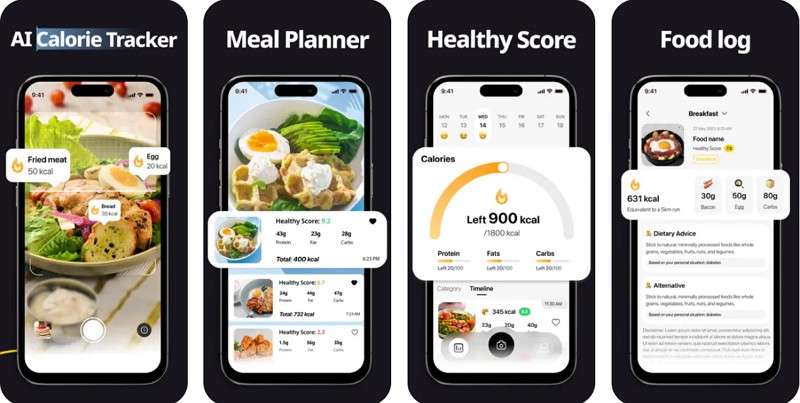
While extracting the calorie insights, the app also offers you alternate options to adjust your meal plans or swap ingredients. If they are up to your goal, you can later add them to your favorites for easy access anytime. Within the Food Log, you can also get dietary advice regarding the food you seek to evaluate. As far as compatibility is concerned, you can install this application on both Android and iOS models.
Key Features
- No Data Collection or Third-Party Sharing: Developed using innovative AI algorithms, the app prevents the collection and sharing of the user's data.
- Meal Categorization: While using any deficit calories calculator, you can tailor the meal type in this app to get personalized suggestions.
- Daily/Weekly Progress Charts: It's a visual dashboard that displays detailed scores of calories, helping you spot habits and manage consistency.
- Offline Logging: All the core features of this application work without an internet connection, making it easy for you to track nutrients when needed.
Use Cases
- Busy Professionals: Office workers can capture the image of food items and get calorie amounts in real-time with minimal effort.
- Fitness Enthusiasts: Gym freaks can get alternative options and dietary advice with this app and add them to their favorites to reach their goals.
- Dieters Wanting Healthier Food Choices: Dieters can get healthy options and suggestions using the app based on the information they provide.
- People with Dietary Restrictions or Allergies: By analyzing BMI data, it can tailor food logs for individuals with allergies and dietary restrictions by seamlessly categorizing their meals.
- Meal Preppers: The recommendations made in the app will make sure that meal preppers receive a list of suggestions and dieting tips to prepare meals that fit the objectives of their consumers.
2. FatCalc
Being accessible online, this calculator for calorie deficit offers you calorie deficit counting by letting you add your body details. For that, it gives Imperial and Metric-based units to input your details in a format you are comfortable with. Hence, while displaying the body parameters, users can access the detailed goal in KJ and Kcal form to better understand their daily energy needs.
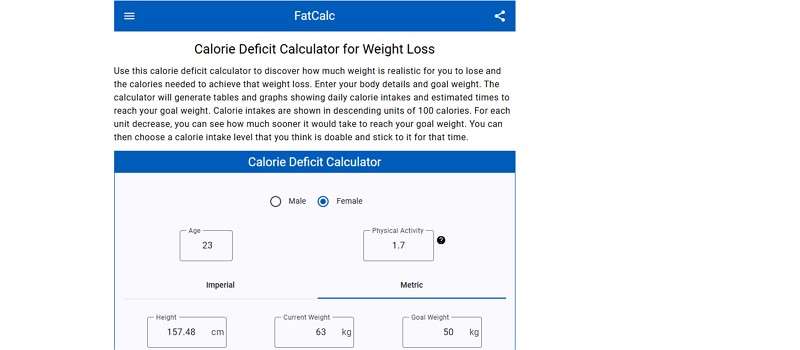
3. Calorie Deficit Calculator App (Android | iOS)
By using AI-based food tracking, this calorie deficit calculator gives comprehensive data on the number of calories taken in daily. It also shows the progress of weight in the Progress tab, indicating the time at which it began and the scale of the weight out of 100 percent. Users can also sync this app with Apple Health to automatically import activity, nutrition, and biometric data.

4. TDEE Calculator
This TDEE calorie deficit calculator is another foremost option that allows you to calculate calories by using Imperial or Metric units. Whether you are an athlete or someone who does heavy exercise, this calculator lets you determine the activity while calculating. Ranging from moderate to higher carb, this calculator calculates the macronutrients in maintenance, cutting, and bulking.
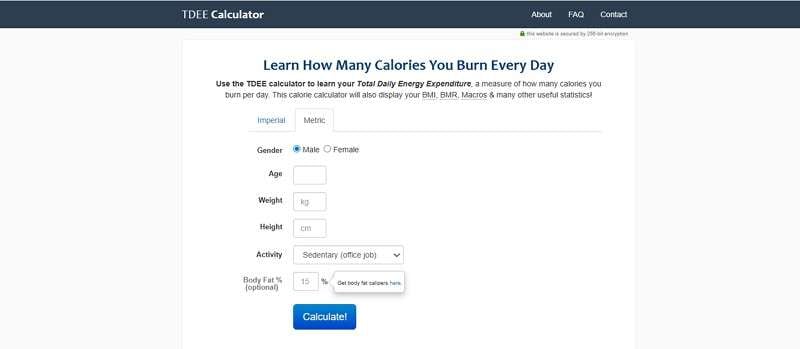
5. Healtheir Weight
Offering you a detailed and accurate calorie deficit calculation, this tool is simple, easy to use, and accessible online. Rather than offering detailed charts, this solution provides a one-click solution to determine if you need to lose or maintain your weight. Unlike other solutions, it uses the Mifflin-St— Jeor's equation to estimate Basal Metabolic Rate and calorie intake.
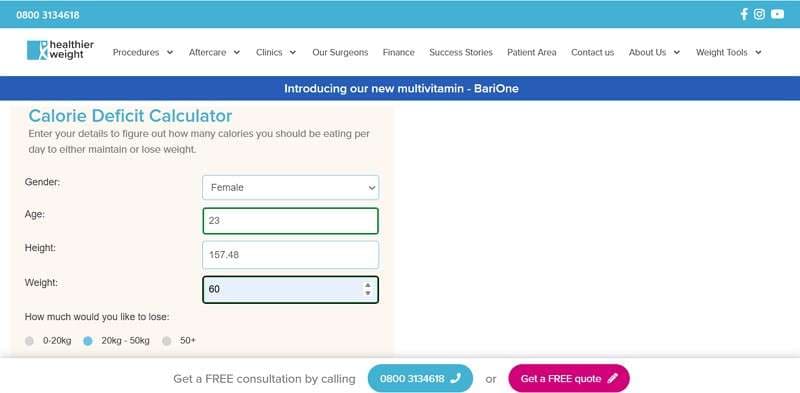
Conclusion
Summing up, having an ideal calorie deficit calculator allows you to set precise calorie goals, track progress effectively, and sustainably achieve your fitness targets. Thus, this guide has presented you with five different options and explained how they work. When using them, consider that CalBye enables you to keep track of how many calories you consume so that you can make easy dietary adjustments.
FAQs
-
How accurate is a calorie deficit calculator?
Most of the calculators, including the TDEE calorie deficit calculator, give an estimate based on your information, including age, weight, height, and activity level. This data is trustworthy primarily, but the outcomes may differ according to the metabolic variations and lifestyle. -
Can I use a calorie deficit calculator for weight gain?
Yes, by adjusting the settings to create a calorie surplus instead of a deficit, you can plan healthy weight gain, such as building muscle mass. This will help you to power up muscle growth better whilst limiting fat gain using controlled nutrition. -
How much of a calorie deficit is safe for weight loss?
On average, a moderate deficit of 500- 1,000 calories per day is generally considered safe, which leads to gradual weight loss of about 1- 2 pounds per week. By this, you will be able to lose weight progressively without diminishing energy or muscle mass.





